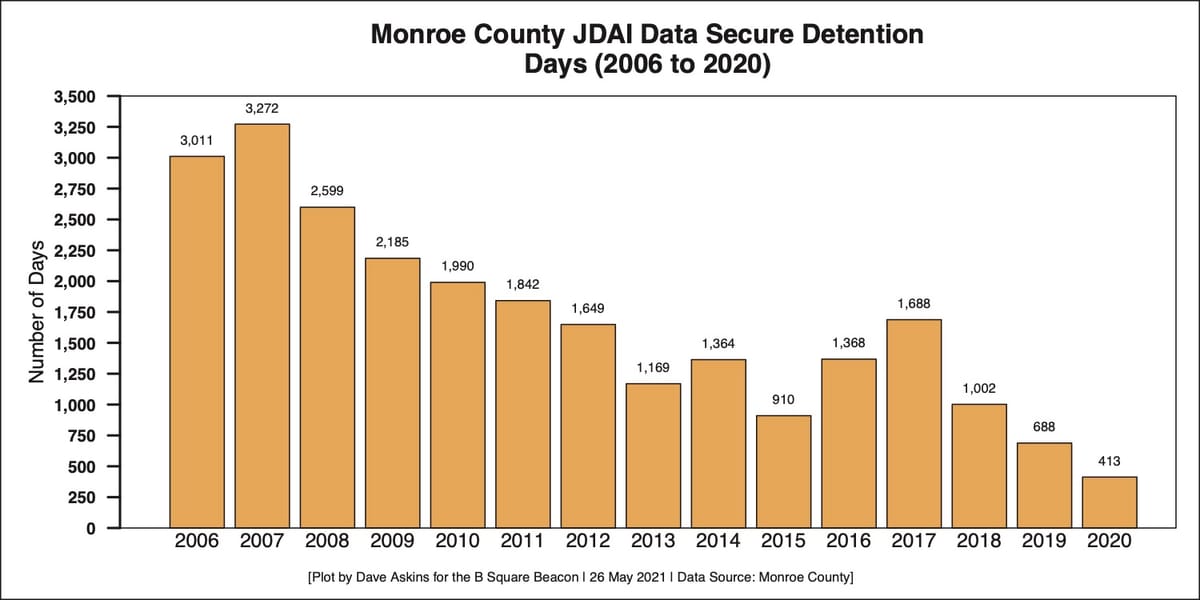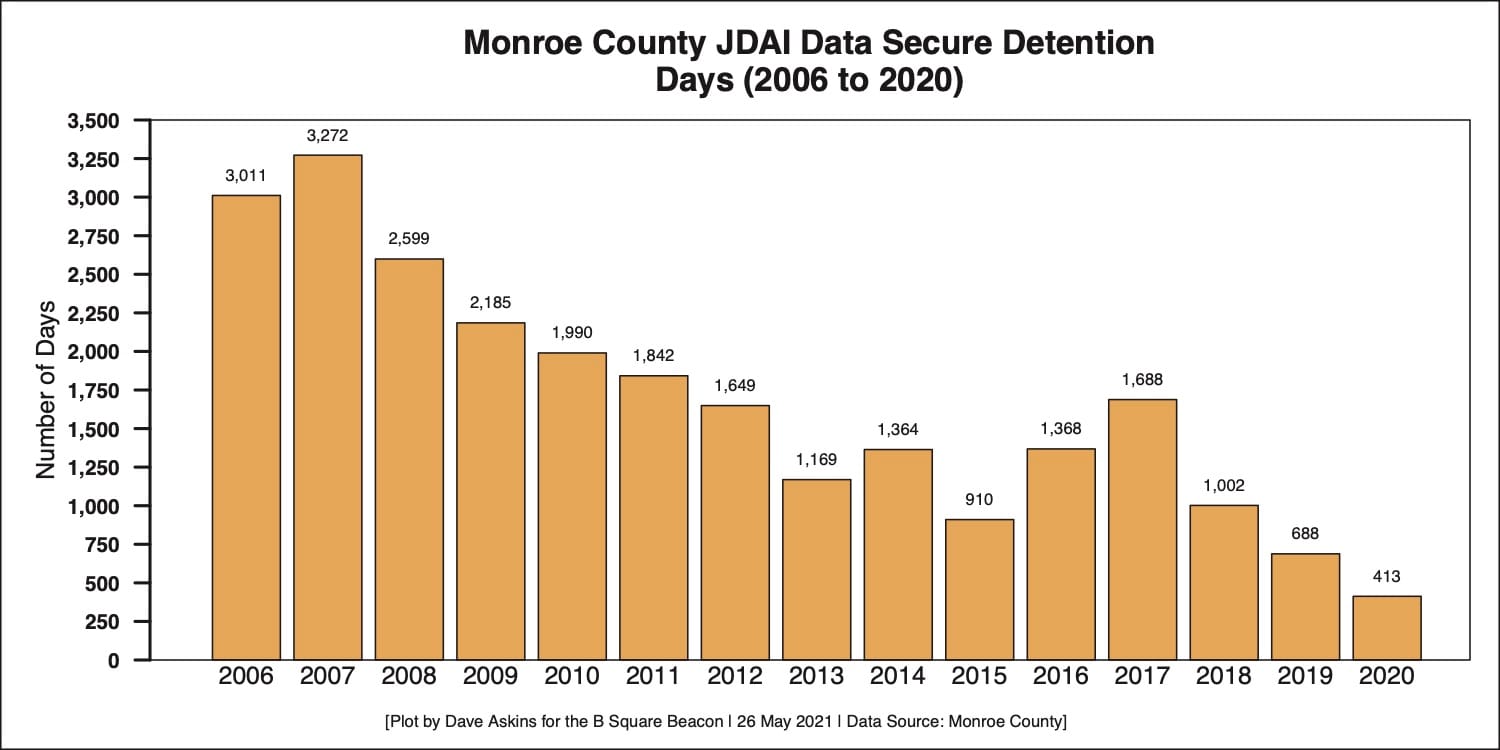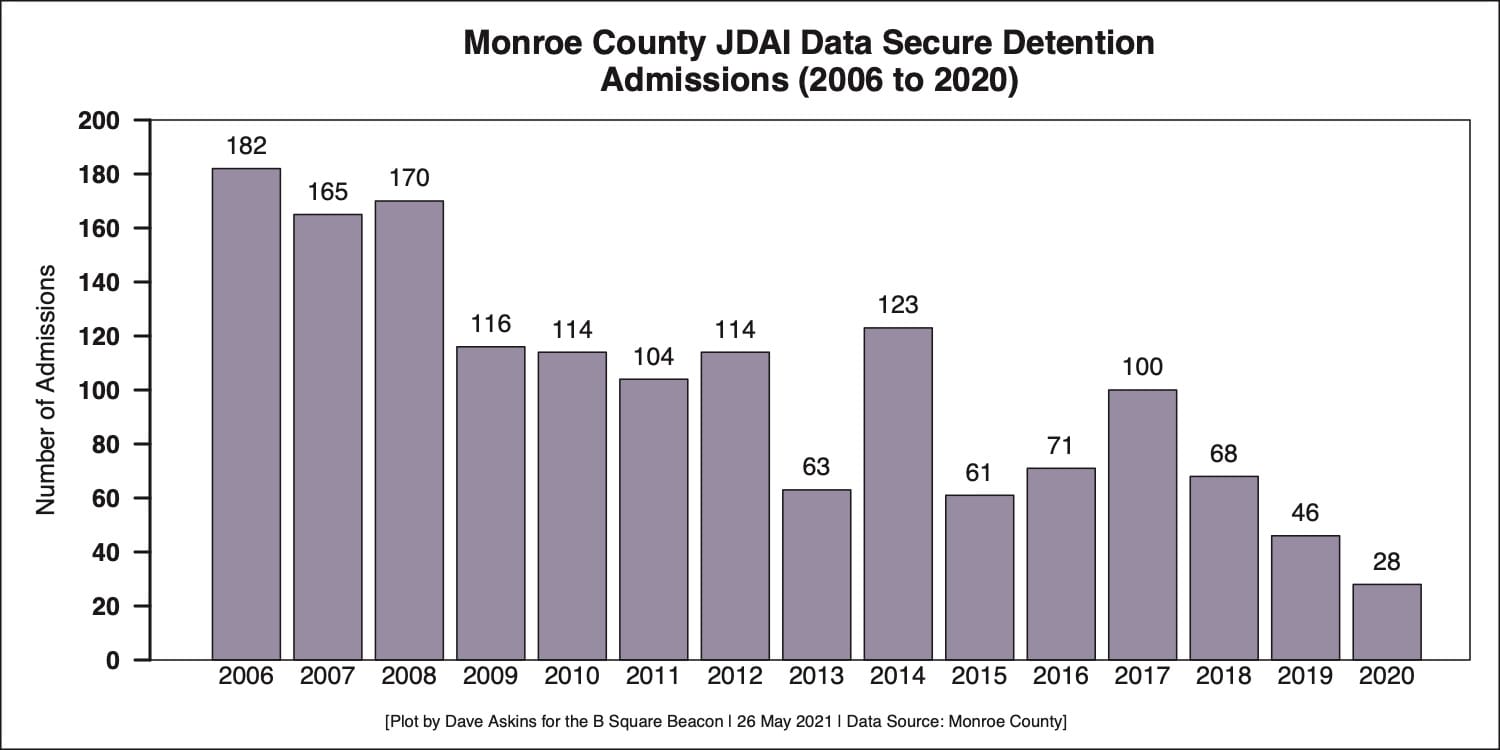Update on good trends for juvenile detention alternatives program heard by Monroe County council



At a Tuesday work session, Monroe County councilors took the necessary steps to ensure $55,000 in funding can be used to support programs that give youth some alternatives to detention.
The specific steps that were given a unanimous vote by the seven-member council involved the creation of some new account lines and additional appropriations. That’s the sort of thing that is the bread and butter of the council, which is the county’s fiscal body.
Councilors also got an update on statistics related to “secure detention,” which counts as one measure of how well the alternatives are working. The trend is in the right direction, which is downward.
The money is provided from Annie E. Casey Foundation’s Juvenile Detention Alternatives Initiative (JDAI) through Indiana’s department of corrections. The update was provided by Christine McAfee, who is the county’s JDAI coordinator.
On hand to answer questions was Monroe County circuit court judge Stephen Galvin, who handles juvenile cases, and chairs the state’s juvenile justice improvement committee.
According to McAfee, Monroe County has received $544,315 in JDAI funds since 2014. This year’s allocation is $55,000, which is about the same as the previous two years. The high over that period was 2015-2016, when the county received $105,000 and the low was $36,119 in 2018-2019.
Of this year’s amount, $10,000 will go towards office supplies, food, training/travel, software. The other $45,000 will go towards educational supplies, supervision incentives, and postage, among other items.
McAfee laid out the eight strategies used by for Monroe County’s JDAI programs:
- incentives for youth and families to participate in JDAI work groups and committees
- purchase basketballs and footballs for law enforcement officers to share with youth
- funds to pay for pro-social activities, clubs, memberships, etc. for youth and families
- care packages for youth and families
- Step-up (family violence intervention)
- continued support of trust based relational intervention (TBRI) implementation
- Monroe County Childhood Condition Summit accessibility services
- race, ethnicity, and inclusion (REI) community book club
The overall trend in secure detention—for admissions, total number of days, and money spent—has been downward.
Since 2013, the average daily juvenile population in secure detention shows a 60-percent decrease, according to McAfee. The annual admissions over the same period show a 50-percent decrease.
The average number of admissions each year from 2006 to 2012 was about 138, compared to 70 for the period between 2013 and 2020. In 2020, the number of admissions was 28, according to the slide presented by McAfee.
Dollar amounts for detention have shown a corresponding decrease.
Councilor Marty Hawk said, “When you look at the dollar expenses coming down for detention, what I’m saying is: What a success story! That just means that many youth are not locked up.”
Hawk added, “And for anybody who wants to know why we don’t want to do that, go visit a detention center and it will break your heart.”
Councilor Geoff McKim followed up on Hawk’s comment with agreement: “The chart about the money there is not really about the money. I mean, that’s not the important thing.”
McKim added, “We invest a huge amount of money in alternatives to incarceration for youth in Monroe County. And I think that’s money extremely well spent.” About the table showing decreases in dollar amounts, McKim said it’s just an indicator of how little the county is forced to use secure detention.”
Judge Galvin told councilors that he’s concerned about the racial disparity in juvenile outcomes. Galvin said the numbers are going down for all groups, but not as quickly for youth of color. Youth of color still spend longer in detention and are disproportionately represented, Galvin said.
According to a 2018 report on equity in Indiana’s juvenile justice system, Black youth are disparately represented at all decision points: referral, diversion, detention, petition, delinquent, probation, confinement, and transfer.
Galvin said he does not think that Indiana’s Supreme Court sees those kinds of outcomes as acceptable. He pointed to the fact that the court’s chief justice, Loretta Rush, is a former juvenile Judge, as is justice Steven David.
Galvin said, “They’re not taking this lying down. I know these folks, and they have really made a commitment.”




Comments ()